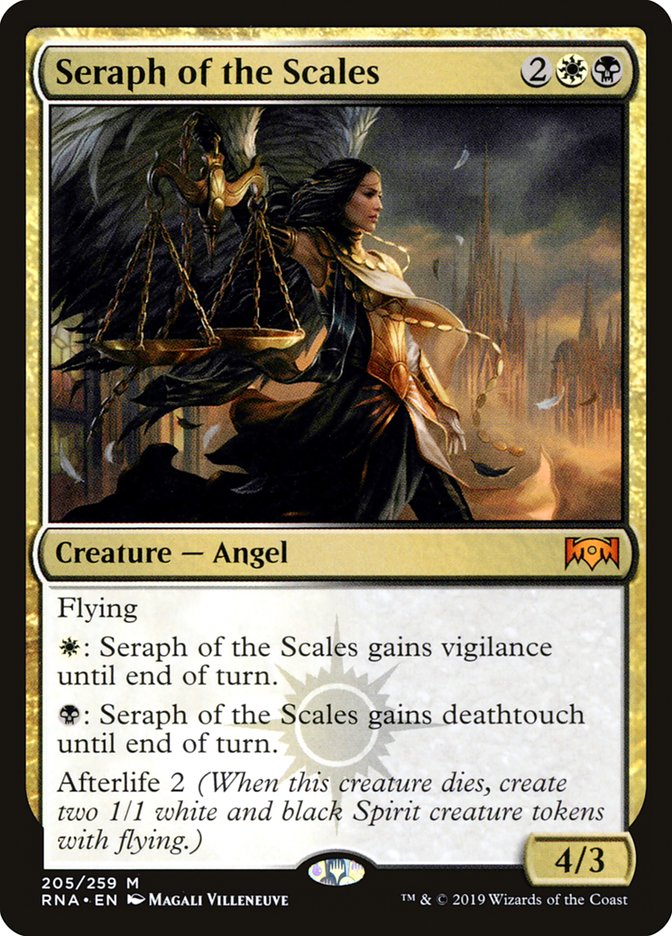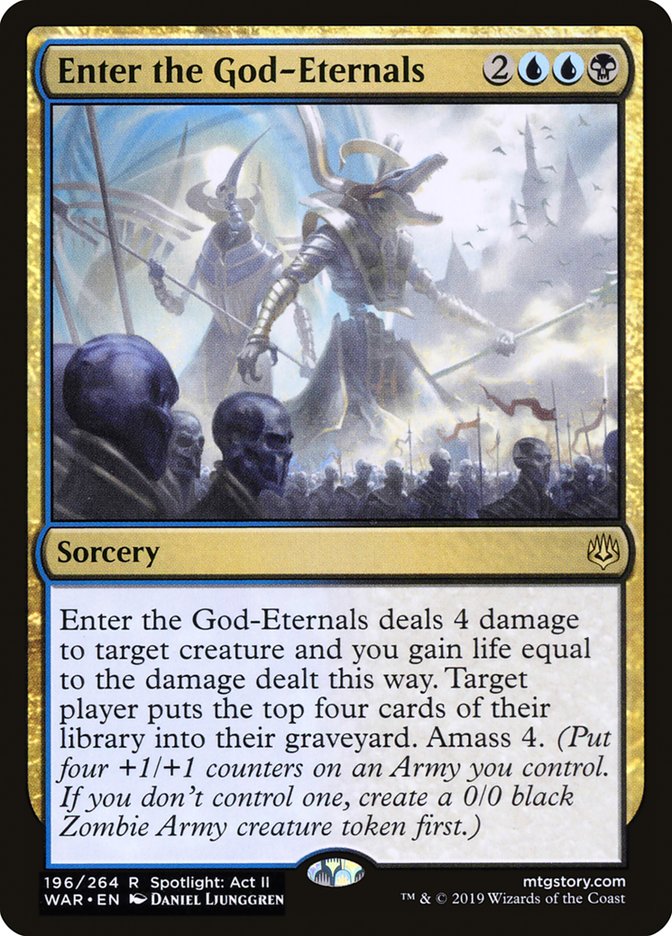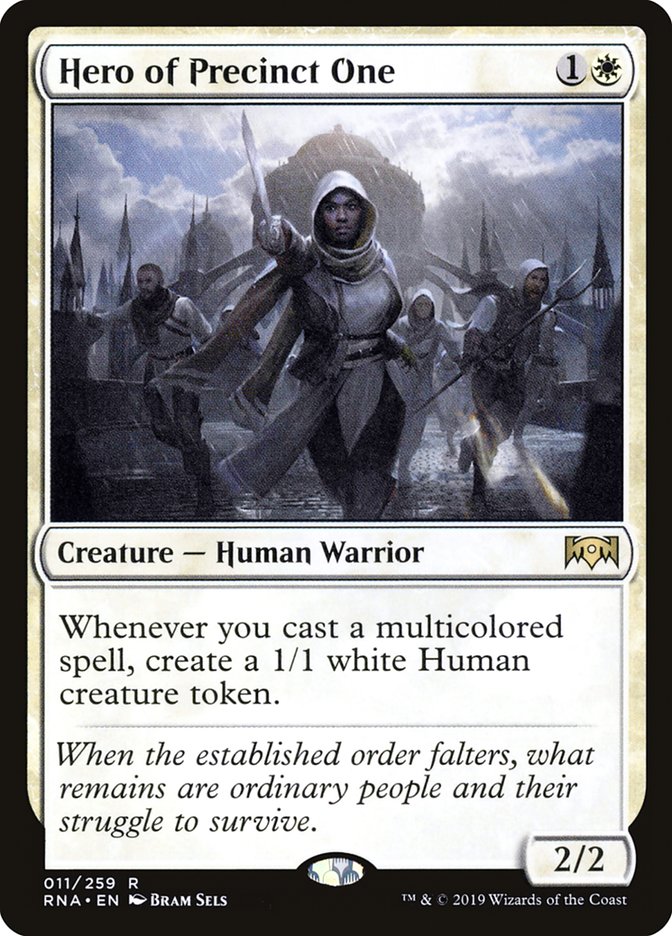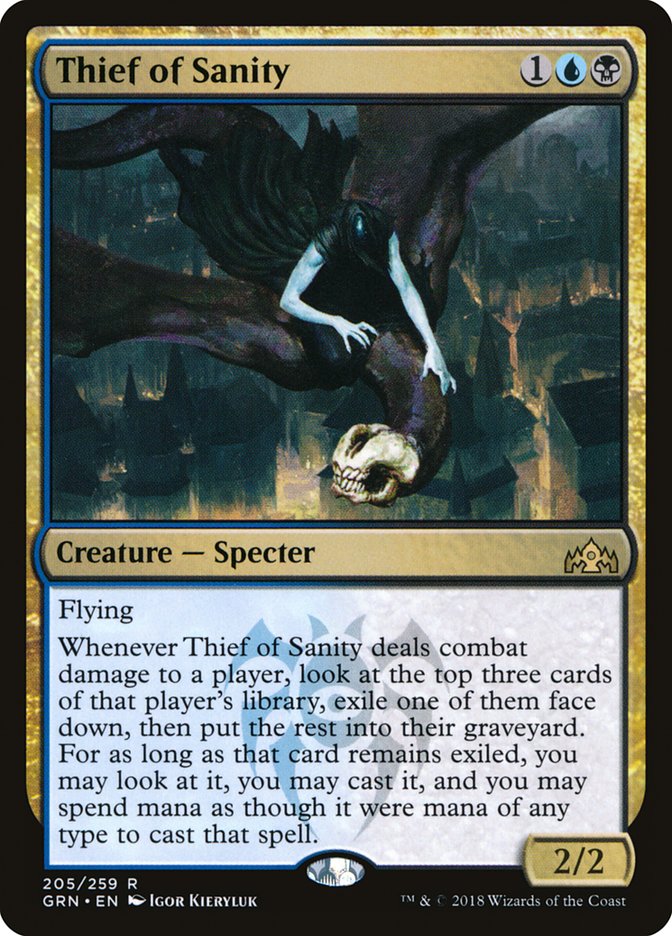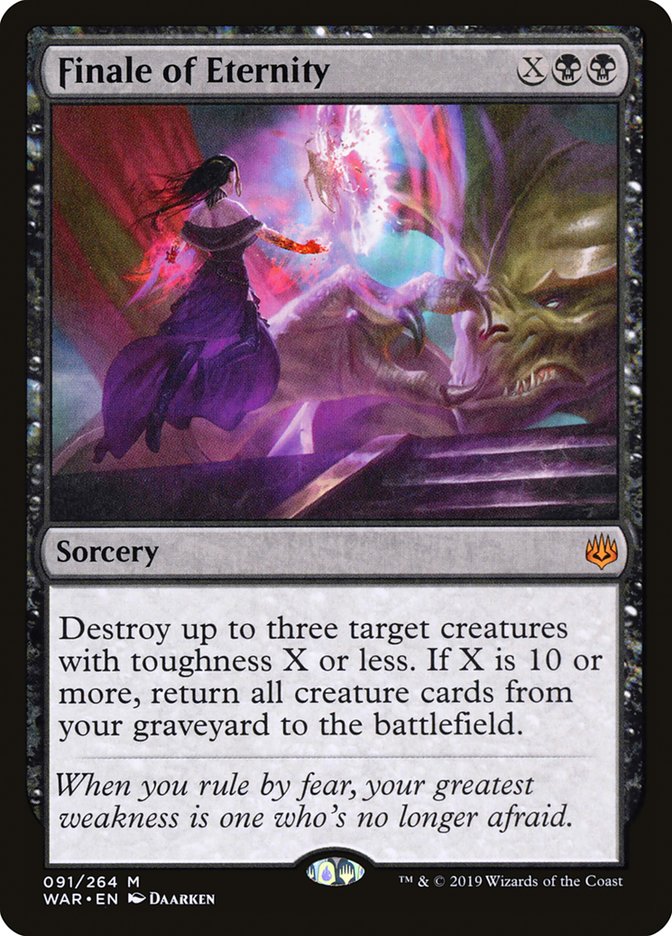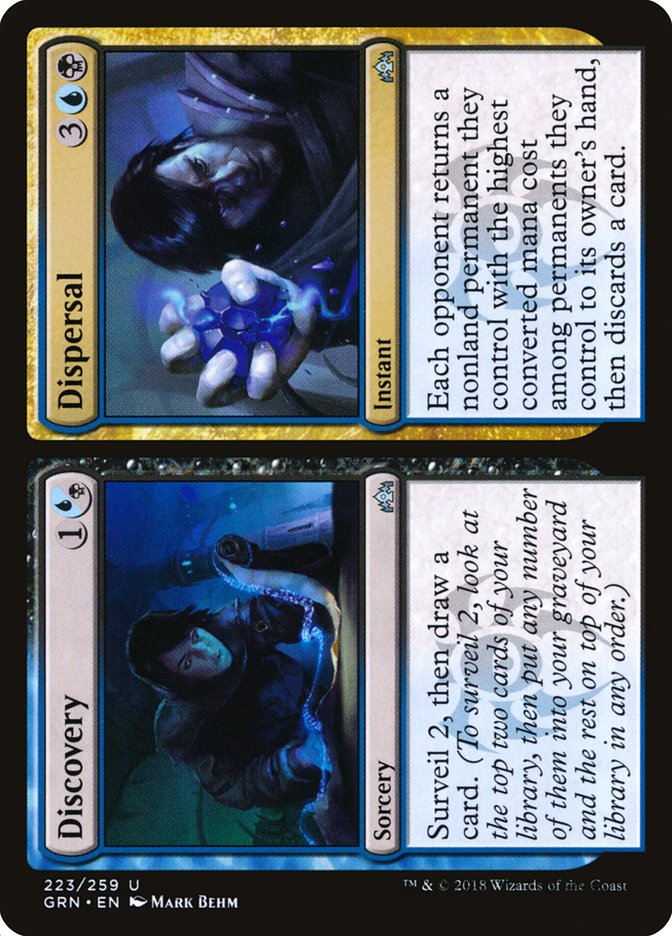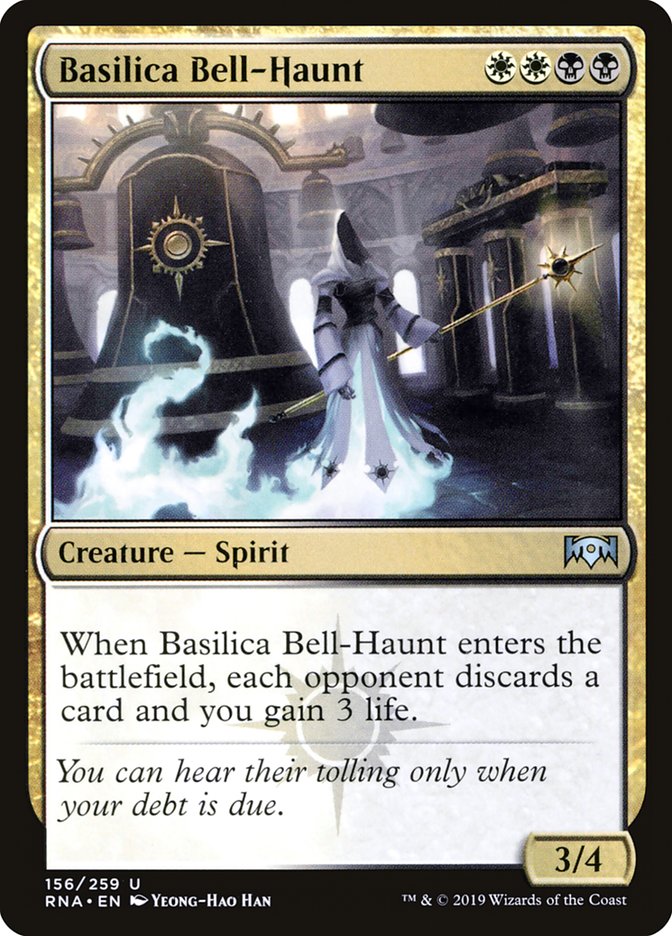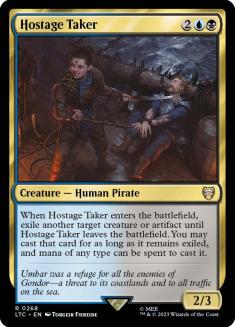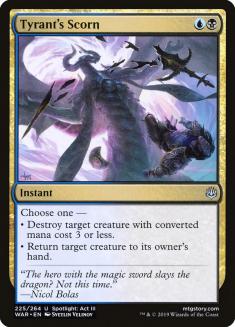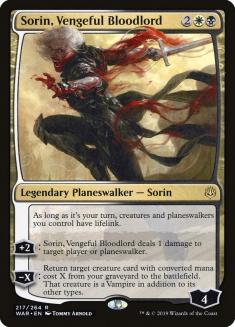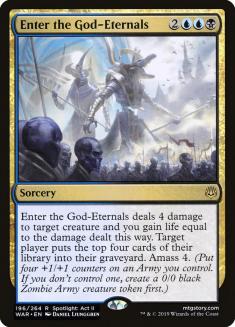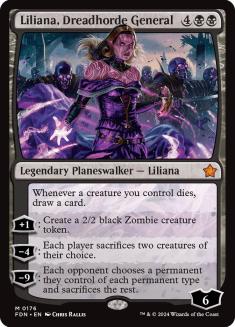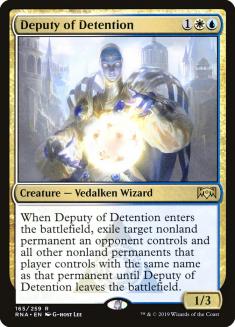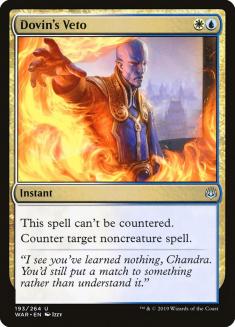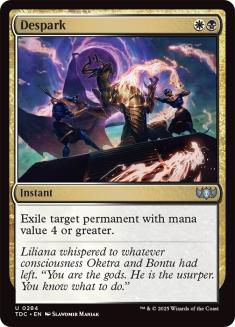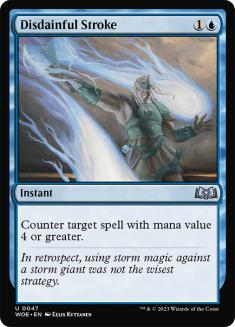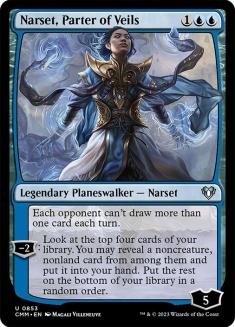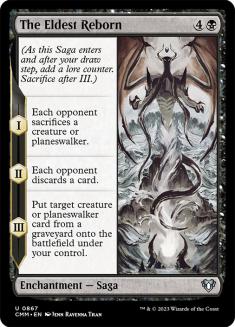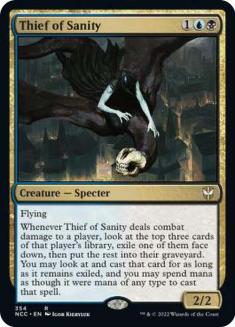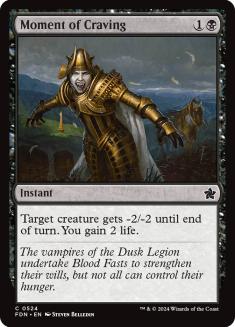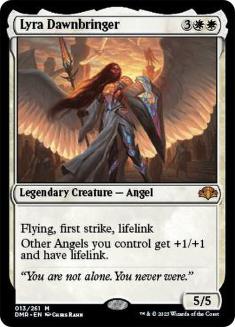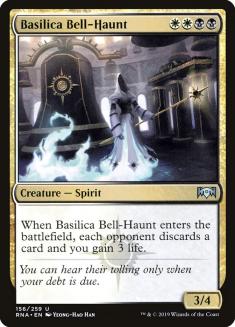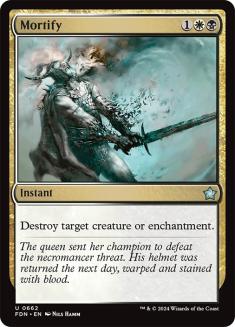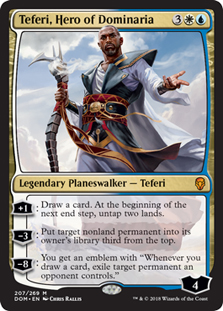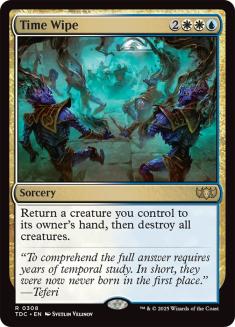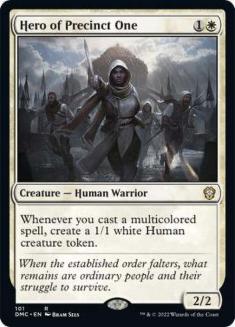By most accounts, my tournament in Richmond last weekend was wholly unremarkable. I was in contention for a while, had a feature match or two, but eventually ended with a 10-5 record and a Top 64 finish. In this business, we call that the bread and butter. Few tournaments are a complete bust, and even fewer end with a Top 8, so most of the time you’re in the middle, looking back at a few well-played matches and a few that got away.
But over the course of those fifteen matches I learned a lot about the Esper Midrange deck I played and about War of the Spark Standard as a whole.
I had been excited about Esper Midrange since trying out a couple of variants of the deck on VS Live! during preview season. Teferi, Time Raveler looked like a powerful card that would also have an incredible impact against any deck with counterspells or Wilderness Reclamation. I wrote about the deck last week and nothing in my testing since then would cause my confidence to waver.
I didn’t view Esper Midrange as a broken archetype with its new additions, but it was clearly a powerful, proactive deck and importantly had solidly favorable matchups against Simic Nexus, which was getting the most hype of any archetype on social media, and the aggressive decks that have typically been the go-to response to a rise in Simic Nexus. Where Esper has historically struggled is against other midrange decks like Sultai, which had fallen off at the end of last season and didn’t seem to get significantly better with the new set.
Like most Magic players, I spent Friday night sitting in my hotel room, staring at the deck and fretting over the last few slots, but I ended here:
Creatures (14)
Planeswalkers (7)
- 1 Dovin, Grand Arbiter
- 1 Liliana, Dreadhorde General
- 4 Teferi, Time Raveler
- 1 Sorin, Vengeful Bloodlord
Lands (24)
Spells (15)

My goal was to lean on Teferi, Time Raveler in pre-sideboard games against Nexus and Control decks, and thus slanted more towards aggressive decks with the rest of the maindeck, hence the copies of Tyrant’s Scorn and Enter the God-Eternals. The sideboard has plenty of discard and counterspells to bring in for the dead removal in those matchups, as well as some high-impact cards for aggressive decks like Lyra Dawnbringer, Finale of Eternity, and Time Wipe, a sweeper that plays perfectly with Deputy of Detention and Hostage Taker.
Looking back on the tournament, these are my primary takeaways:
Lesson 1: Seraph of the Scales Is Not a Playable Magic Card
I was warned several times about Seraph and didn’t listen. I wanted the extra body to pressure Simic Nexus and act as a threat I could freely extend into a Kaya’s Wrath or Finality. In reality, the card is awkward and clunky, often getting bounced by Teferi, Time Raveler or Blink of an Eye, and there are plenty of fine answers to it that avoid the afterlife trigger, from Lava Coil and Conclave Tribunal to Vraska’s Contempt and Despark.
Even when I made two spirits, they were rarely relevant. By the end of the tournament I was sideboarding out the two copies I had in every matchup, and registering them was the single largest mistake I made on the weekend.
In Wyatt Darby’s primer on the deck from earlier this year, he notes that the card is important against Sultai Midrange, which makes sense given how important removal-resistant fliers are against a midrange deck with mostly ground creatures and Vivien Reid, but Sultai Midrange is nowhere near the force it once was in Standard, and thus there’s no longer a compelling reason to register such an underwhelming card.
Lesson 2: Enter the God-Eternals Is Extremely Matchup-Dependent
Enter the God-Eternals reads a lot like a combination of Flametongue Kavu and Loxodon Hierarch, the latter of which was a fixture of midrange decks in its day because it was excellent against aggro while still being a serviceable threat against control.
But like Flametongue Kavu, which has to target a creature with its enters-the-battlefield ability even if it turns on itself, Enter the God-Eternals needs a target in order for you to get the body. That makes it very difficult to cast against noncreature decks, essentially requiring you to have a Hero of Precinct One generating tokens you can upgrade into a Zombie Army.
I was willing to bias my deck a lot towards aggressive decks, but with Simic Nexus and Esper Control both at the top of the metagame, I think playing too many copies is a liability.
Lesson 3: Answering Planeswalkers Is Important
This should’ve been more obvious to me, given that we just had 36 of them added to the format with War of the Spark, but I severely overestimated my build’s ability to pressure planeswalkers in combat. The creature count is much lower than in previous Esper Midrange lists and Thief of Sanity is quite poor at attacking planeswalkers.
I was essentially relying on Hero of Precinct One to create an early battlefield until sideboarding, and that simply wasn’t enough. Tamiyo, Collector of Tales does a great job of blanking discard and undoing earlier disruption and has a starting loyalty so high that it’s tough to attack down even with a Hero draw.
I played a game in the mirror where I came out ahead on every exchange for the first five turns as my opponent struggled to keep a Thief of Sanity from connecting. Just when I thought he was out of answers, he cast Liliana, Dreadhorde General, clearing my two creatures and leaving me completely hopeless because of my mistake in deckbuilding.
Even the cheaper planeswalkers with less loyalty like Teferi, Time Raveler; Narset, Parter of Veils; and Viven, Champion of the Wilds are tough to answer without an early Hero and can do plenty of damage when left unchecked. My list needed more ways to directly remove a planeswalker from the battlefield, especially in the maindeck.
Lesson 4: Finale of Eternity Isn’t Exciting in a Planeswalker-Defined Format
I included the card as a powerful option against aggressive decks that would also serve me well in midrange matchups where it could provide a devastating effect as the game goes long. But the card is only effective against decks with a high density of creatures, and most of the midrange decks I saw last weekend were relying more on planeswalkers.
Sultai Midrange fell off from where it was a few months ago, and even against the Bant Midrange decks that emerged, it’s a big, expensive sorcery that’s difficult to set up, which makes it vulnerable to Frilled Mystic and instant-speed Shalai, Voice of Plenty. It also has a tough time answering God-Eternal Oketra and Hydroid Krasis, their most important creatures. I’d bring the card in because there’s significant upside there, but it comes with significant risk.
As for the aggressive decks, Mono-Red was the most popular and that deck is fairly creature-light. Finale of Eternity really shines against the white aggressive decks, and the one time I cast the card in Richmond it was against such a deck and completely devastating, essentially a one-sided Cry of the Carnarium that scales as the game goes long. But with those decks putting up a poor performance, I won’t be looking to the card again.
Lesson 5: Missed Land Drops Are Still a Death Sentence in Standard
Wyatt Darby’s initial list of Esper Midrange had 24 lands, so I started there and didn’t find reason to change. I raised the curve only slightly and Esper doesn’t have a great mana sink like Hydroid Krasis to topdeck while flooded. But with a curve concentrated between two and five, it was very important to make five to six land drops a game so I could start effectively double-spelling to maintain pace or catch up when behind in development.
Even without a big mana sink, it’s easier to win games when flooded, especially when your deck has lots of planeswalkers, while missing a land drop early makes it hard to land those planeswalkers safely. It also makes it difficult to establish a clock while properly disrupting Simic Nexus or get underneath Esper Control’s counter wall and keep them under too much pressure to resolve a Chemister’s Insight or Teferi, Hero of Dominaria to start pulling ahead.
Add a land is the single most common piece of advice I give to people who ask me to look at their decks, and last weekend I failed to take that to heart.
With these lessons in mind, here’s how I would build Esper Midrange moving forward:
Creatures (12)
Planeswalkers (8)
- 2 Teferi, Hero of Dominaria
- 1 Liliana, Dreadhorde General
- 4 Teferi, Time Raveler
- 1 Sorin, Vengeful Bloodlord
Lands (25)
Spells (15)

This list is closer to the one Brian Braun-Duin piloted to a near Top 8 finish, going a bit bigger since the tools to be more aggressive simply aren’t there and aren’t really necessary. You can bury Simic Nexus with disruption after drawing enough extra cards, you don’t turn the corner against aggressive decks by casting a mopey flier, and the addition of Teferi, Hero of Dominaria should go a long way toward improving the deck in midrange mirrors and against Esper Control.
Teferi, Hero of Dominaria also offers an easy way to answer opposing planeswalkers, which, coupled with the maindeck copy of Despark, gives the list more ways to directly answer planeswalkers.
I’ve seen some lists cut Discovery entirely, but I was happy with the card in small numbers last weekend, since having more cheap spells helps your Hero draws a lot and I cast Dispersal several times to good effect.
This list is less slanted towards aggro decks, hence moving to two copies of Moment of Craving and the Basilica Bell-Haunts, which, while awkward with the basic Island, are significantly more powerful than Elite Guardmage. The fourth point of toughness means Bell-Haunt survives most burn spells and checks Goblin Chainwhirler, while also remaining relevant much more often against Azorius Aggro and its ilk. You could play a Swamp over the Island in the maindeck, but outside of Bell-Haunt the Island is better.
The Eldest Reborn was underwhelming for me, but I want a card that can answer Carnage Tyrant out of Simic Nexus and Time Wipe isn’t it. Perhaps Liliana’s Triumph is the answer but it’s a much weaker card against Sultai Midrange and can’t come in against control decks, so for now The Eldest Reborn stays.
With this updated list, here’s how I’d sideboard against the top decks in Standard.
VS Simic Nexus
Out:
In:
This is a solid matchup, but you need to play carefully, because even a small mistake can snowball quickly. An early Hero or Thief is important to maintain pressure, and from there it’s about surgically picking them apart. I prioritize taking out sources of card advantage first – Search for Azcanta and Tamiyo, Collector of Tales – though Wilderness Reclamation is a higher priority when it comes down early, because the mana advantage will put them too far ahead.
Deputy of Detention is a fine card here but it often makes you quite vulnerable to Blast Zone because it has the same converted mana cost as Teferi, Time Raveler and Thief of Sanity, so I’m happy trimming one. If you know your opponent doesn’t have Carnage Tyrant, I’d leave the second in over The Eldest Reborn.
VS Mono-Red Aggro
Out:
In:
With our combination of cheap removal, lifegain, and high-impact cards like Enter the God-Eternals and Basilica Bell-Haunt, this matchup is solidly favorable. The entire goal of this sideboard plan is to survive long enough to find and cast those high-impact cards. Teferi, Time Raveler is a weak card here, but bouncing a Runaway Steam-Kin and drawing a card is much better than Thief of Sanity will be. Hostage Taker dies too easily and is thus a liability at four mana.
Once you stabilize the battlefield, prioritize holding an answer to Experimental Frenzy and/or Chandra, Fire Artisan because those are the cards that can steal a game, which is why I retain the maindeck copy of Despark.
VS Esper Control
Out:
In:
Of the top decks, this is definitely Esper Midrange’s worst matchup. If you draw the right half of your deck you can win Game 1, but they are well-equipped to drag the game on, eventually leaving you with a hand of dead removal as they take over.
Post-sideboard, things get a lot better as those dead removal spells become relevant cards, but you’re not ahead by enough here to turn the matchup around. Playing the how much removal do I keep in for Thief of Sanity game is tough, but I think three copies of Mortify is enough and you don’t want to overload on reactive cards, since they’re still favored going long.
VS Esper Midrange
Out:
In:
Teferi, Time Raveler is good at bouncing Zombie Army tokens, but this matchup is about running away with Thief of Sanity or planeswalkers and little Teferi isn’t great in that fight. It’s unclear to me how many Dovin’s Vetos you want, but in general I’d rather have cards that affect the battlefield in midrange mirrors, so I’m keeping it to the maindeck copy.
The Eldest Reborn is also a consideration here, but I fear it will trade with a Human token and a Mortify far too often, and you already have plenty of five-mana plays.
VS Azorius Aggro
Out:
In:
Another solid matchup where sideboarding is rather straightforward. Lower the curve and bring in plenty of removal and lifegain. That said, gaining ten life won’t beat this deck. You have to beat them on the battlefield. Generally, once you take over you can stick a Thief of Sanity that buries them in card advantage, so I cut the high-end. If they have a lot of Ajani, Adversary of Tyrants, I’d consider leaving in a Despark or Teferi, Hero of Dominaria to handle it, but otherwise I’m leaving in a couple of Teferi, Time Ravelers, since it can cleanly answer creature tokens.
VS Bant Midrange
Out:
In:
This was the breakout deck from last weekend so I have yet to test the matchup, but I’m treating it similarly to Sultai Midrange. Hero of Precinct One generally doesn’t do enough to gain a battlefield advantage, so I swap it out for more cheap removal to control their mana creatures and then bring in as many high-impact cards as I can. They’re light on fliers and removal so Thief of Sanity is going to be an important card advantage engine, especially since it can team up with a removal spell to permanently answer God-Eternal Oketra.
My instinct says that this matchup will be quite poor, since they’re going to be better at establishing a battlefield, and thus better at attacking planeswalkers while protecting their own. Plus, with few strong early plays, it’s going to be tough to stop them from establishing Vivien, Champion of the Wilds, at which point their deck becomes near impossible to play against.
It’s still early in War of the Spark Standard, but the early metagame is one in which Esper Midrange is poised to thrive. It may not have pushed into the Top 8 in Richmond, but it was knocking on the door and put several players into the Top 32 and Top 64, and the deck that dominated the Top 8, Mono-Red Aggro, is a very good matchup, so even with a decline in Simic Nexus decks, it should still maintain a solid position in the metagame going forward.


